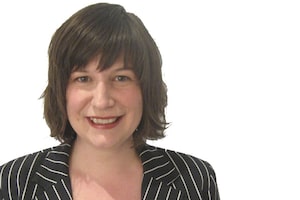Last year, David McCallum was far from living life to the fullest.
"I was feeling pretty sick," says the 88-year-old resident of Scarborough, Ont. "I couldn't function properly while walking, breathing; there was pain, everything."
A visit to the doctor and an angiogram revealed that Mr. McCallum suffered from severe aortic stenosis (narrowing of the aortic valve in the heart), which was the cause of his debilitating symptoms. Mr. McCallum's condition would require intervention, not only to improve his quality of life, but also to prevent degeneration of his heart muscle that could become life-threatening.
"It affected me all the way round," he says.
Mr. McCallum was referred to the cardiologists at the Peter Munk Cardiac Centre (PMCC), and the team decided that he was a candidate for a leading-edge procedure called Transcatheter Aortic Valve Implantation, or TAVI, which involves inserting a new valve through a catheter in the leg. It's a life-saving option for patients who are too sick or high-risk for open heart surgery.
TAVI was one of the first projects approved by the Peter Munk Cardiac Centre Innovation Committee back in 2012, says Dr. Harry Rakowski, cardiologist, who leads the Innovation Fund program. "We thought it was important for the PMCC and UHN [University Health Network] to help lead this innovative device that would help people for whom there was little alternative hope."
Though TAVI procedures had been happening at the centre and elsewhere for a few years, says Dr. Rakowski, at the time it was not yet approved or funded by the Ministry of Health and Long-Term Care in Ontario, and "we felt we needed to do some implants to prove to the ministry there were Canadian centres capable of doing it well, with good outcomes."
But Mr. McCallum's TAVI procedure would be particularly groundbreaking – he would be the first patient in Ontario to undergo an "awake TAVI," without general anesthetic. By using only local anesthetic at the site of the catheter insertion, as well as "conscious sedation," awake TAVIs result in decreased procedure time and are less invasive, allowing patients a faster recovery and earlier discharge from the hospital.
When PMCC cardiologist Dr. Eric Horlick explained the procedure to Mr. McCallum, he says he felt quite comfortable going forward with it. "I'd had a couple of stents put in a few years ago, so I thought to myself, 'There's no more risk to that than getting a stent put in,'" says Mr. McCallum.
Even though he would be the first patient in Ontario to undergo the procedure while awake, Mr. McCallum says that didn't bother him. "I took it all in stride. You put your faith in the people who are going to do the job," he says.
"Dr. Horlick asked me, 'What do you expect from this?' And I said, 'I expect to come out the other side,'" says Mr. McCallum with a chuckle.
Mr. McCallum's historic awake TAVI procedure took place on January 16, 2015. Because there would be no general anesthetic, there was no need for a breathing tube or a urinary catheter. An anesthesiologist administered sedation, and Mr. McCallum says the procedure that followed was painless.
"There was no discomfort at all," he says. "I was surprised it was over in about half an hour. I heard that, normally, the way they were doing it before, you had tubes down your throat, all kinds of things. It seemed much less invasive to me. I never felt a thing," he admits.
"To be honest with you, I was lying there, looking around and thinking, 'All this damned equipment for me?' And the nurses and doctors – it was quite an experience to see what they were all doing, you know?"
In the years since the Innovation Committee first voted to support and fund the TAVI project, more than 420 patients at UHN have benefited from the procedure. It was partly due to this success that Ontario's Ministry of Health and Long-Term Care approved and began funding TAVI in 2013, and it's now currently being used in several key hospitals across the province that have demonstrated excellence in the field, says Dr. Rakowski.
As for Mr. McCallum, he stayed on for three days in the hospital after his awake TAVI and went home feeling "really good." And he says that good feeling has continued to this day.
"I would recommend this procedure anytime at all. I wouldn't have one hesitation," he says. "It was very, very well done."
This content was produced by The Globe and Mail’s advertising department. The Globe’s editorial department was not involved in its creation.
 Shelley White
Shelley White